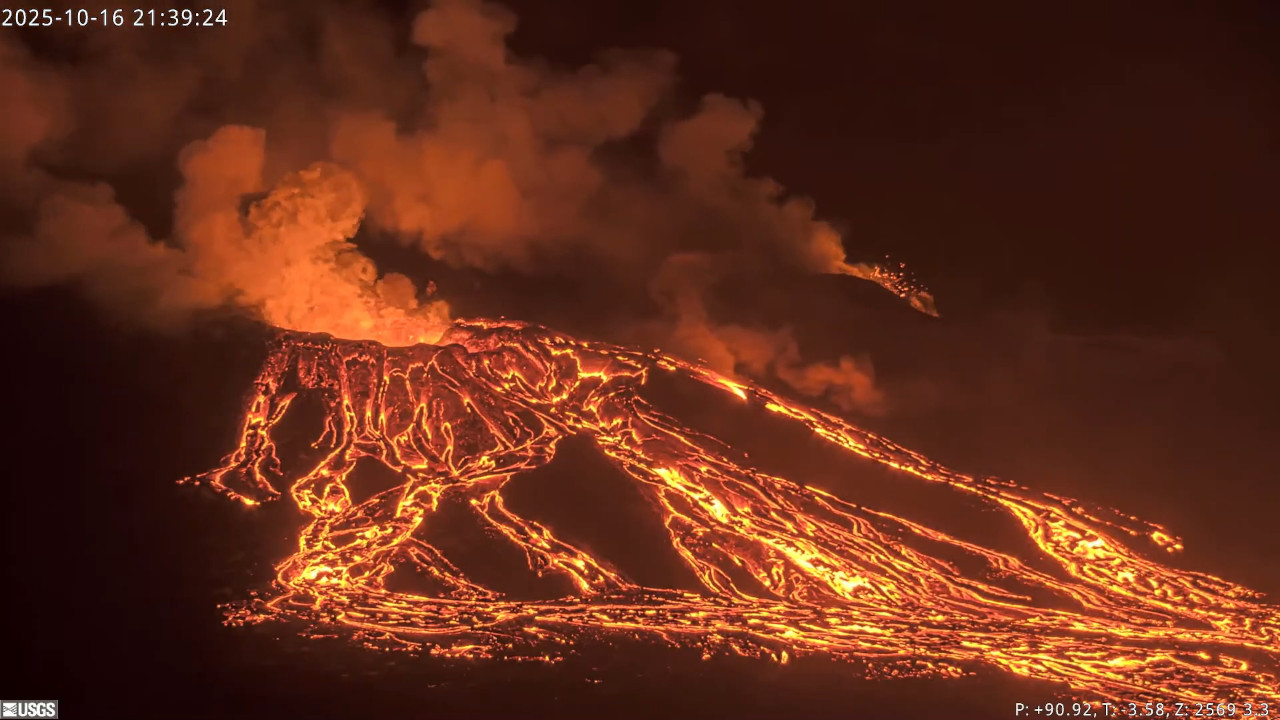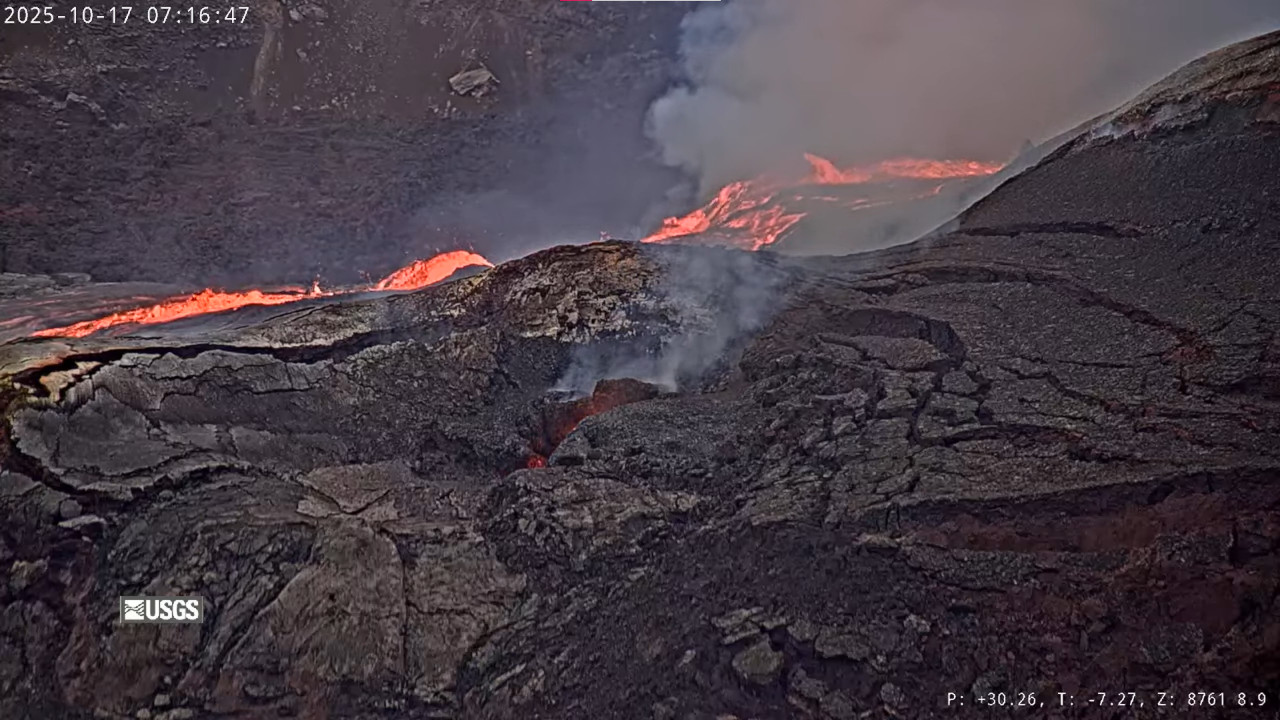All images and video are courtesy the U.S. Geological Survey. A synthesized text-to-video voiceover was used in the narration for this story.
(BIVN) – Lava emerged from the Kilauea summit caldera on Thursday, with the next instance of high fountains expected soon.
The estimated window for the start of Episode 35 is now open. Precursory lava activity continues at both the north and south vents. High lava fountains could occur within the caldera at Hawaiʻi Volcanoes National Park at any moment.
The USGS Volcano Alert Level for Kilauea remains at WATCH.
A series of lava overflows and drainbacks occurred at the south vent on Thursday, while occasional spatter was seen at the north vent. Scientists expect to see the south vent play a prominent role in Episode 35.
UPDATE – (11:15 a.m.) – From the Friday morning update by the USGS Hawaiian Volcano Observatory:
Activity Summary:
Precursory low-level activity for episode 35 of the ongoing Halemaʻumaʻu eruption increased yesterday, October 16. Twenty-five south vent overflow-drainback events occurred over the past 24 hours. Each overflow produced lava flows that flowed onto the crater floor. Each overflow ended with lava suddenly draining back into the south vent. Similar overflow-drainback events occurred during the lead up to previous fountaining episodes. Vigorous intermittent lava spattering has occurred at the north vent over the past 24 hours. More overflows, drainbacks, spattering and small fountains are expected as we approach the onset of episode 35 sustained fountaining. Seismic tremor and inflationary tilt continued at the summit over the past 24 hours. Forecast models based on the rate of summit inflation indicate that episode 35 lava fountaining is likely to begin between today, October 17, and October 22, with the most likely window between tomorrow and October 20.
Summit Observations:
Twenty-five south vent overflow-drainback events occurred over the past 24 hours. Overflow durations ranged from 4 to 34 minutes. Each overflow produced lava flows that flowed onto the crater floor. Each overflow ended with lava suddenly draining back into the south vent. Many drainbacks were immediately preceded by a short burst of spattering or small fountaining in the vent.Similar overflow-drainback events occurred during the lead up to previous fountaining episodes. Vigorous intermittent lava spattering has occurred at the north vent over the past 24 hours. Strong glow was visible from both vents overnight between events. Seismic tremor bursts consistent gas pistoning activity continued over the past 24 hours. The UWD tiltmeter showed continued inflationary tilt and has recovered approximately 23 microradians since episode 34 ended.
Episode 34 occurred over about 6 hours on October 1 and included lava fountaining from both the north and south vents. Lava fountains reached an estimated 1300 feet (400 meters), and both the north and south vents generated lava flows that covered a large portion of the western part of Halemaʻumaʻu. Episode 34 was preceded by several days of precursory activity, with over 120 gas piston events that produced small, sporadic spatter fountains 10 feet (3 meters) high and numerous short overflows of lava from the north vent. Deflationary tilt at UWD totaled approximately 26 microradians during episode 34 fountaining, with an estimated volume of approximately 12 million cubic yards (9 million cubic meters or 2.5 billion gallons) of lava erupted overnight. The dual fountains also produced a record combined effusion of 500 cubic yards per second, about twice the maximum eruptive rate measured in previous episodes.
Elevated degassing continues from the vents largely in bursts related to gas piston events. Overall, average sulfur dioxide (SO2) emission rates during pauses are typically 1,200 to 1,500 t/d, though emission rates can vary on short time scales.
Strands of volcanic glass known as Pele’s hair are present throughout the summit area of Hawaiʻi Volcanoes National Park and surrounding communities and can be remobilized by wind even after lava fountaining has ceased.



by Big Island Video News7:32 am
on at
STORY SUMMARY
HAWAIʻI VOLCANOES NATIONAL PARK - Precursory lava activity continued at both the north and south vents of the volcano on Friday morning.